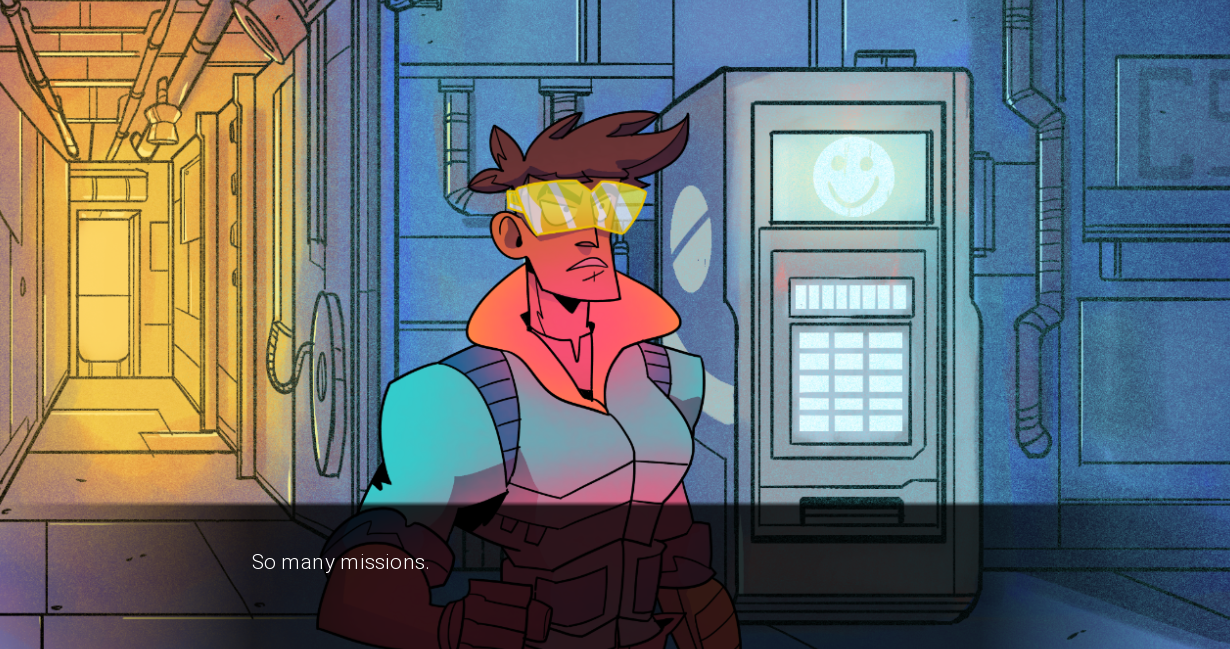Distress is one of the best games of 2018. Almost no one has said a word about it.
The visual novel from Game Informer Associate Editor Javy Gwaltney deserves to be on your radar, though. With eye-catching art from Ian Higginbotham and burbly synth rock from Erandi Huipe, Distress quickly impresses.

But, with 80 endings, the ambitious sci-fi horror game demands to be replayed. Each time you’ll see something different. Each time you’ll learn more about the inner workings of Nova-8, the— abandoned? haunted? monster-infested? all three?— space station that serves as its setting. And, if you’re anything like me, each time you’ll grow more and more impressed that Gwaltney, Higginbotham and Huipe created the visual novel equivalent of a Dark Souls game.
It’s Like Dark Souls
At this point, “It’s like Dark Souls” is a meme. This year alone, God of War, Darksiders 3, Dead Cells, Dandara, Hollow Knight, Death’s Gambit and more have invited the now-cliche comparison. Usually, when people invoke From Software’s action-RPGs, they’re gesturing toward the series’ legendary “git gud” difficulty. Or, they’re referencing the Souls games slow and deliberate combat. Or, they mean that a game parcels its story out via esoteric item descriptions.
The Souls games do all those things, to be sure. But, the difficulty isn’t an end in itself. It’s a stick that forces players to get to know the world. I last dipped into Bloodborne in December of last year, but today, if you put a gun to my head and a pencil and graphing paper in my hands, I could still sketch the spaghetti-tangle layout of the cobblestone streets of Yharnham.
From Software’s level design remains imprinted in my gray matter, not just because the world is impeccably designed—though, of course, it is. But, I can see Yharnam when I close my eyes because the game’s difficulty requires full attention. One wrong step could mean death, so, as a player, you sweatily determine to only take the right steps.
I felt a similar nervousness as I clicked through Distress. The visual novel is not physically demanding in the way that Dark Souls is. But, it is mentally demanding. You can make it out of Nova-8 alive. But, only if you give your full attention to what’s right in front of your face.
The Demand of Distress
Like Dark Souls, Distress delivers a feeling of constant dread. As Demetria, the leader of a band of space bounty hunters investigating the strange happenings on Nova-8, the lives of your crew members are firmly in your hands.
During your first playthrough, you’ll likely see one ore more of your crew members die. The first time this happens it’s shocking. It happens quickly and unceremoniously, but suddenly you realize that your choices have consequences. Suddenly, you approach each click with a feeling of caution.
To put this in terms that From Software fans will relate to, your teammates function an awful lot like Souls. The mysterious space station invites exploration, but at certain points in the story, you’ll be given the option to bail and head back to your trusty ship, the Swiftsure. At these moments, you have a choice: keep going and face certain danger and potential death, or retreat and miss out on the story.
That should be a familiar feeling for anyone who’s weighed the pros and cons before venturing too far from their bonfire. Distress leans fully into the tough risk-reward assessments that make Souls games tense.
It’s an excellent game as a result, an impressive embodiment of an action-oriented design philosophy effectively rendered using only hyperlinks and dialogue.
This is the first part of a series on the best games that no one talked about in 2018.



